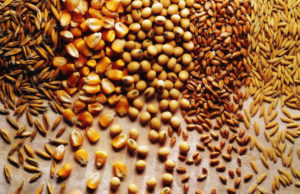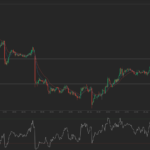 Grain futures edged lower on Friday as forecasts for rainfall in some growing areas is expected to relieve the stress U.S. crops. Soybeans and corn fell more than 1%, while wheat remained fairly unchanged.
Grain futures edged lower on Friday as forecasts for rainfall in some growing areas is expected to relieve the stress U.S. crops. Soybeans and corn fell more than 1%, while wheat remained fairly unchanged.
On the Chicago Board of Trade, corn futures for delivery in December plunged by 1.00% to a days low of $4.7638 per bushel at 11:34 GMT, the weakest level since August 16. Days high stood at $4.8063. The grain rose by 0.16% on Thursday but extended its weekly decline to 3.6% following Fridays retreat.
Meanwhile, soybeans for November delivery slipped 1.24% to $13.5063 per pound at 11:51 GMT. Futures fell to a one-week low of $13.4650 a pound earlier in the day, while days high stood at $13.6938 per bushel respectively. The plunged slipped 0.38% on Thursday and extended its weekly decline to over 0.8% on Friday.
Soybeans pared monthly gains amid forecasts for rainfall across areas of central Indiana and Ohio through September 2, which would ease pressure on the soybeans crop and boost yields. According to David Sheppard, a managing director at Gleadell Agriculture Ltd., corn crops are more mature than soybeans, leaving the plants less prone to drought damage.
Joyce Liu, an investment analyst at Phillip Futures Pte in Singapore, said for Bloomberg: “Forecasts of impending rain are helping the outlook for soybean yields at the moment, but how beneficial the rains would be is still open to question. Investors are still haunted by lingering memories of last year’s drought.”
Soybean prices have surged 12% this month as weather forecasters predicted persisting hot and dry weather which threatened to reduce crop yields. Most of the central and norther Midwest has had less than half of the normal amount of rain in the last 60 days, according to National Weather Service data. The U.S. Drought Monitor said yesterday that drought expanded in Iowa and Illinois the most recent week.
On August 12, the USDA reduced its U.S. corn output forecast to 13.763 billion bushels, 1.3% below its July estimate at 13.950 billion. Stockpiles are also poised to drop and will equal 1.837 billion bushels, 6% below July’s 1.959 billion projections. Soybeans production forecast was revised downward to 3.255 billion bushels, 5% below July’s 3.42 billion estimate, but still 8% higher than a year earlier. Yields expectations were also reduced and now stood at 42.6 bushels per acre, below the previous reading of 44.5 bushels and analysts’ projections for a 43.6 output per acre.
According to the Professional Farmers of America, which made a four-day tour of fields in seven Midwest states last week, soybean output may fall by 3% below USDA’s 3.255 billion bushels projections. Soybeans have fallen 1.8% this year amid ample supply outlook but prices jumped 15% in August as deteriorating weather conditions threatened yields. Meanwhile, corn production might contract by 2.2% below the government agency’s 13.763 billion bushels forecast but it is still expected to be record high.
Elsewhere on the market, wheat futures for December delivery swung between gains and losses. The grain rose by 0.21% to a days high of $6.5500 per bushel at 12:05 GMT after trading mostly lower throughout the day. Days low stood at $6.5188 per bushel. The grain fell by 0.9% on Thursday, a third straight daily decline, but extended its weekly advance to 3.3% following Fridays gains.
Wheat was pressured recently as India, the world’s second-biggest producer, may resume exports after a three-month pause as a 19% fall in the rupee boosted the country’s competitiveness on the international markets. Tejinder Narang, an adviser with Emmsons International Ltd., said for Bloomberg yesterday that traders may export more than 1 million tons by March. This would pressure prices on the CBOT that have already fallen 27% this year amid ample global supply prospects. He also noted that shipments may further increase if the government reduced the export price of grains from its stockpiles.





